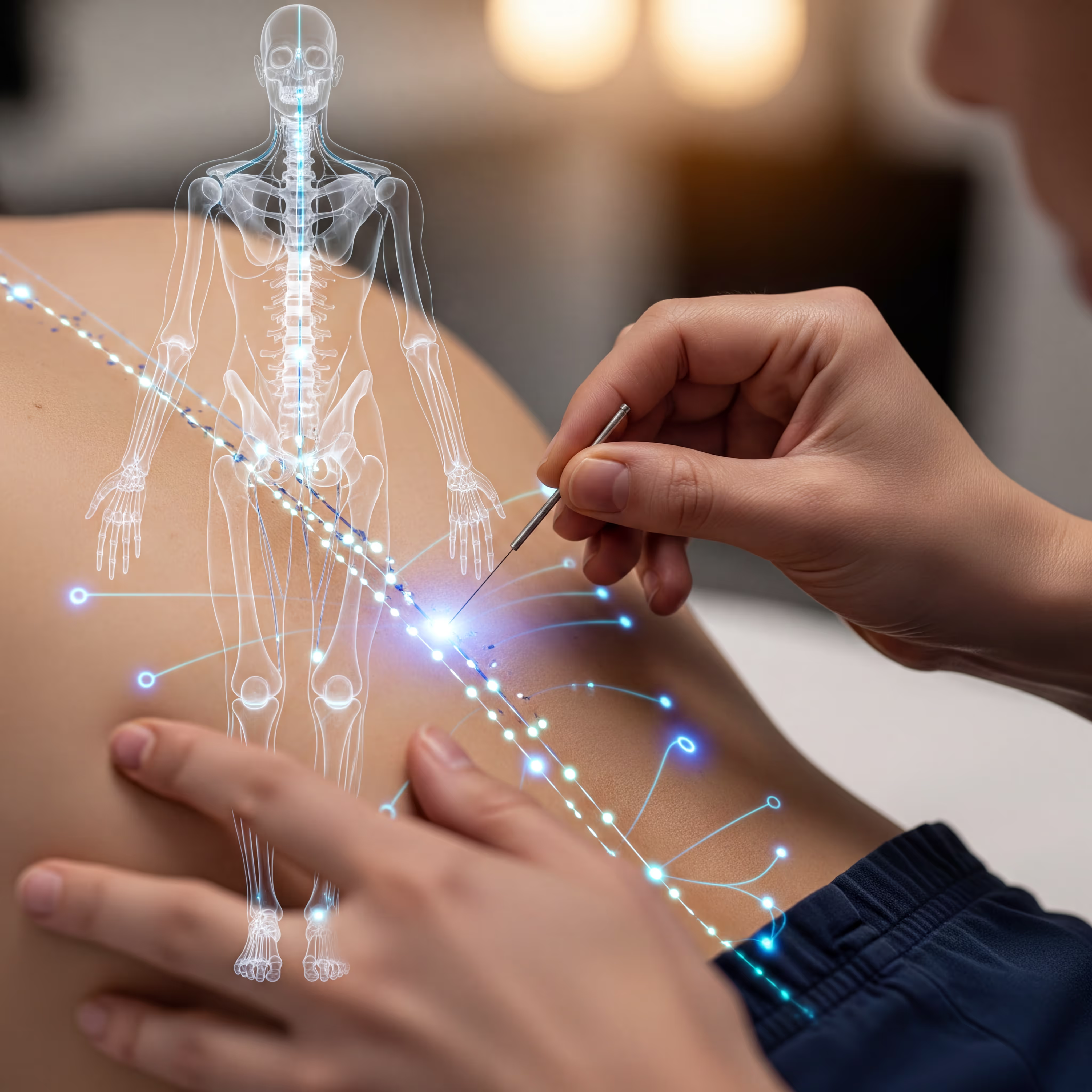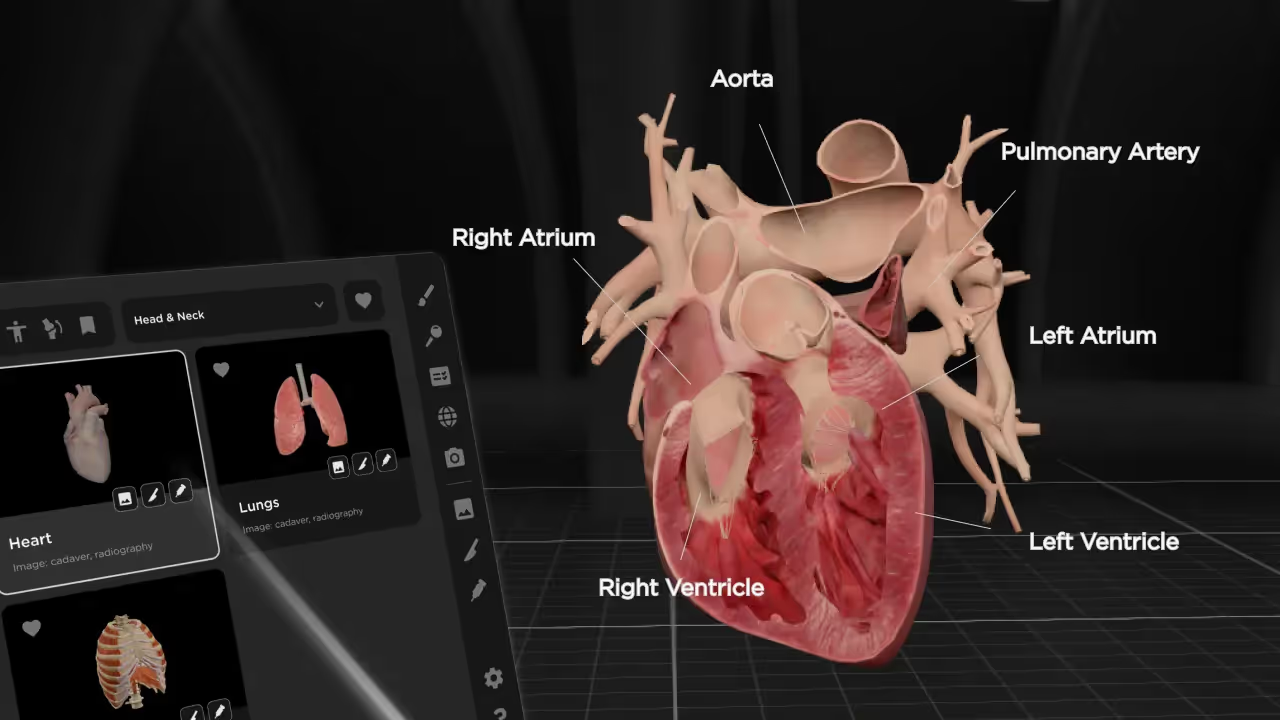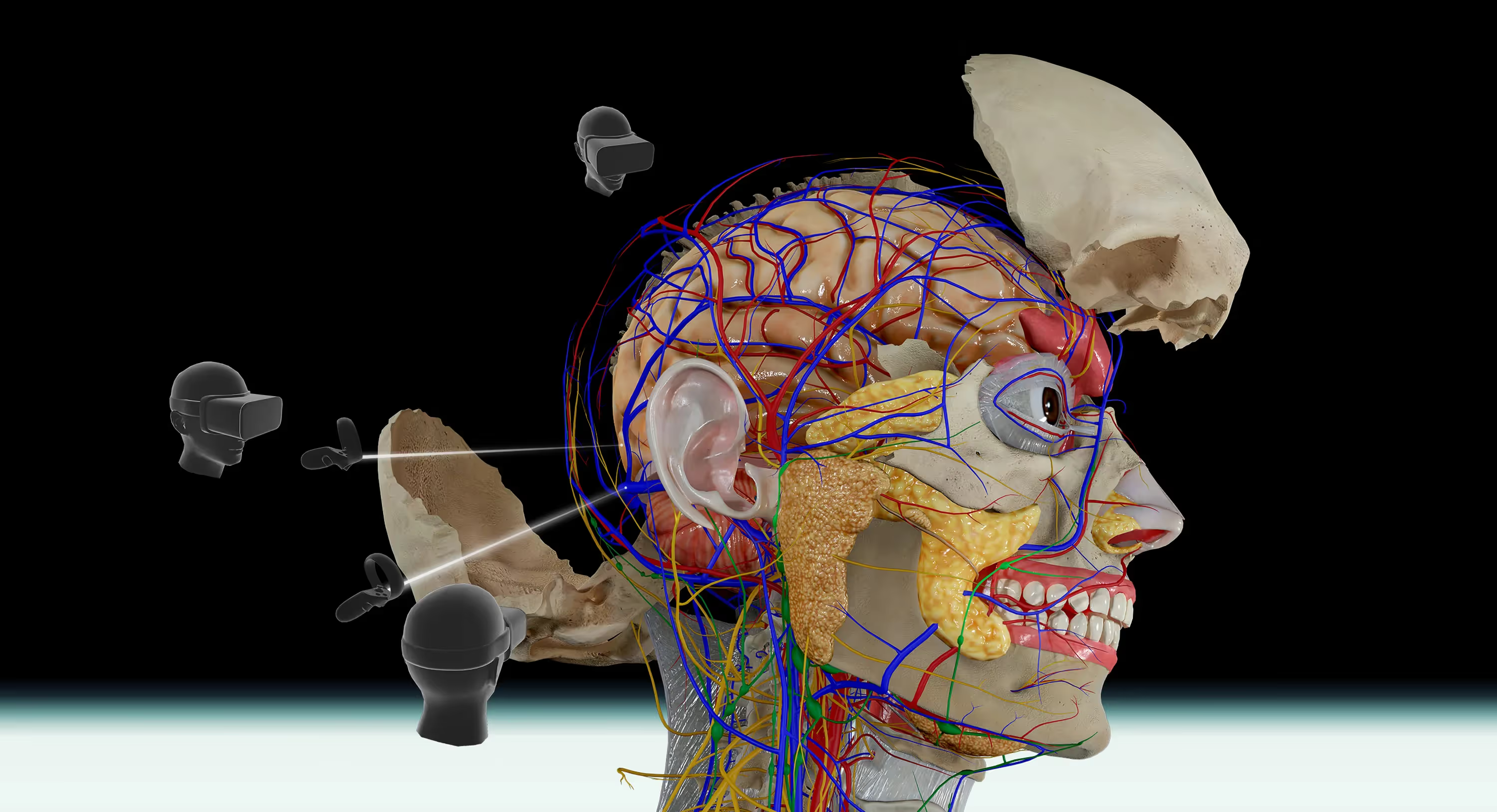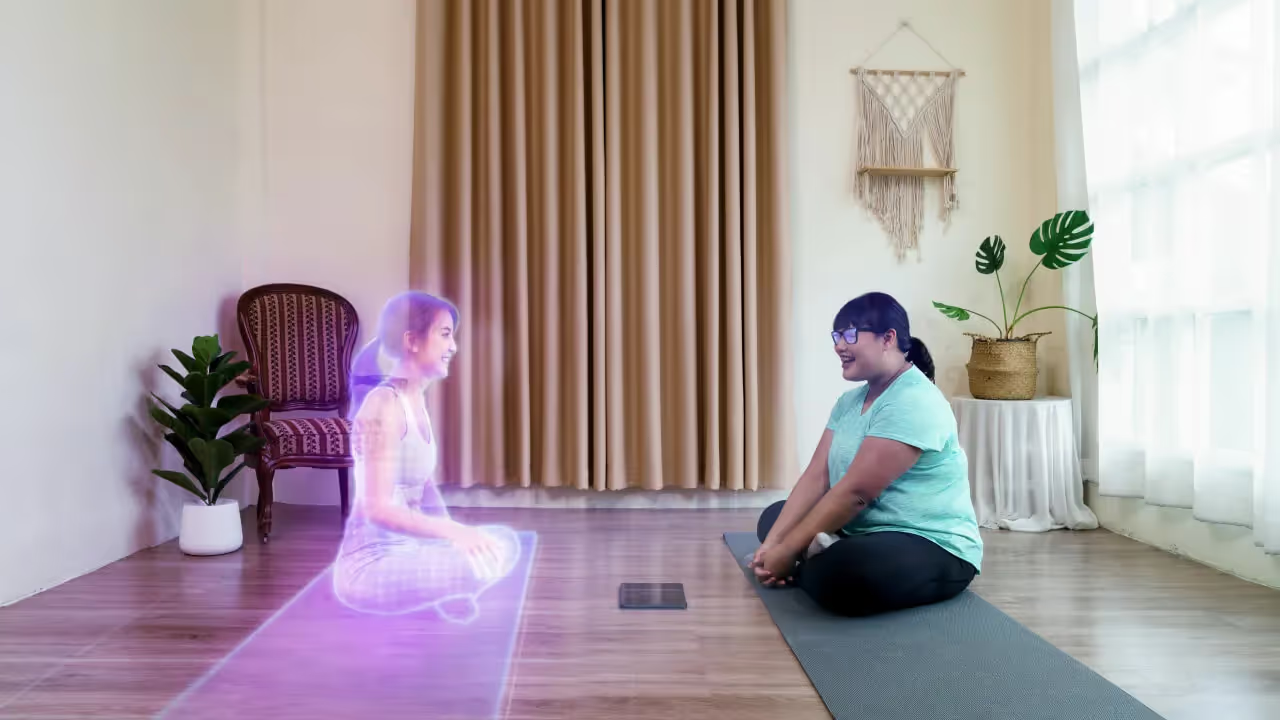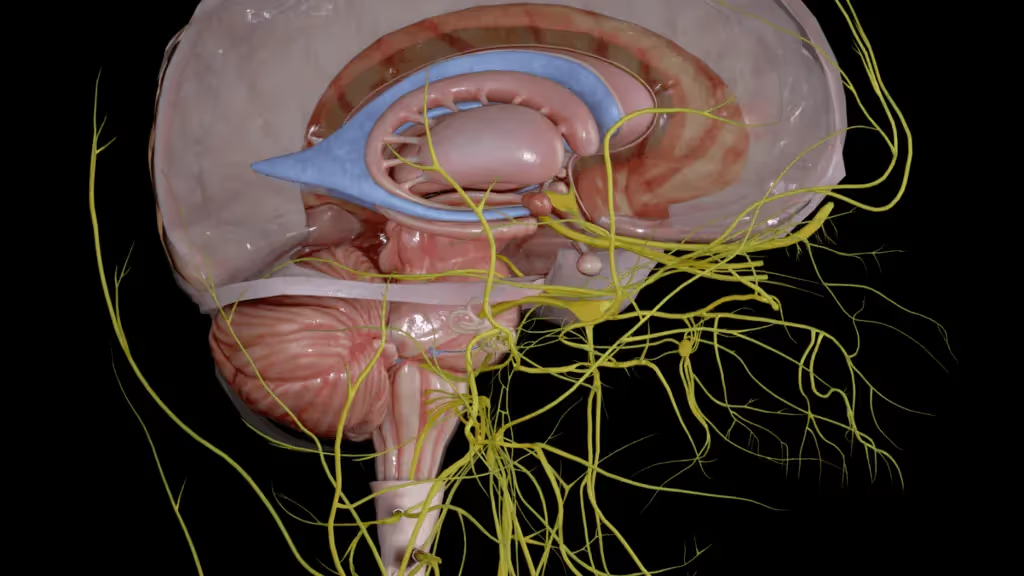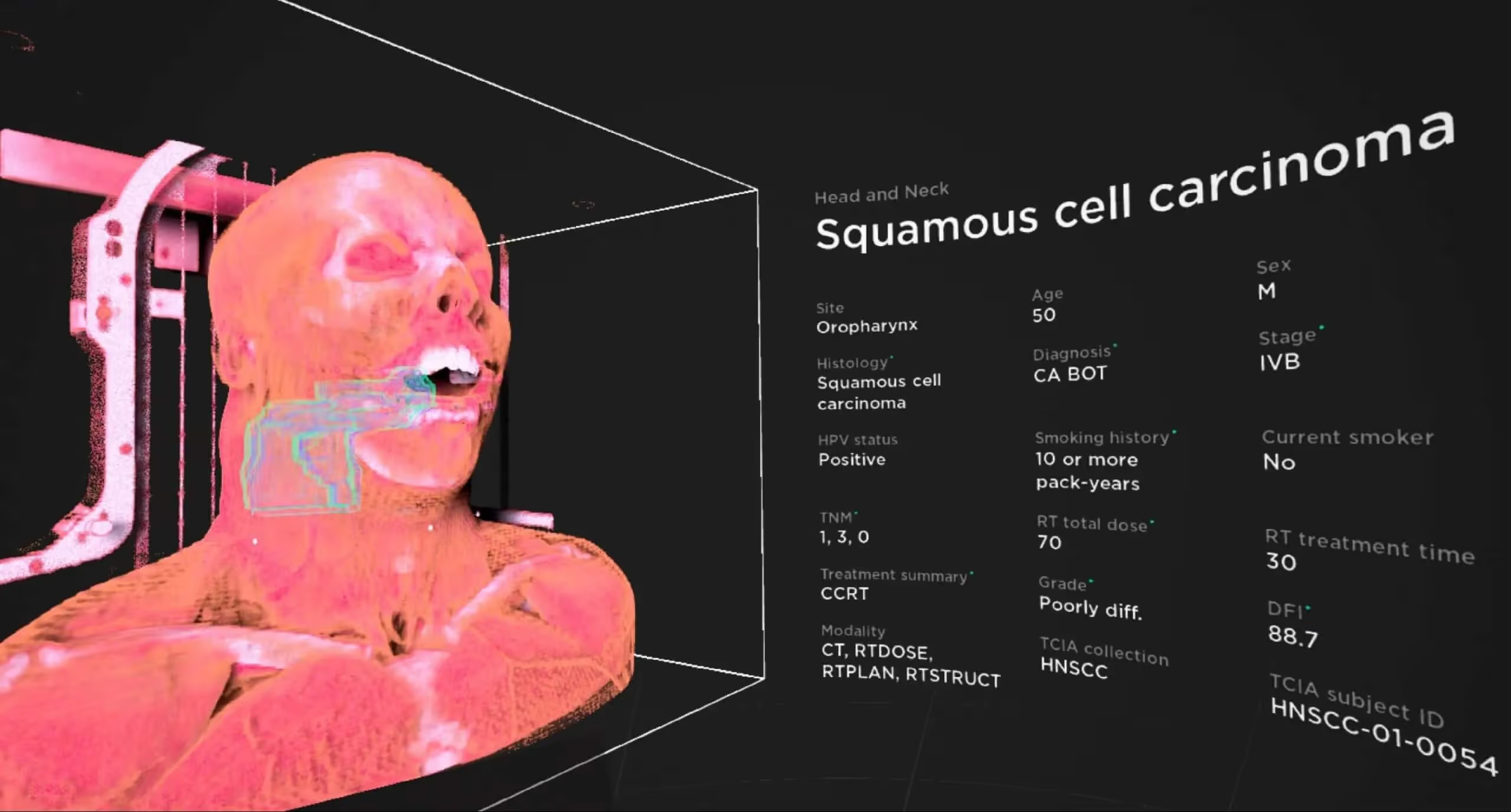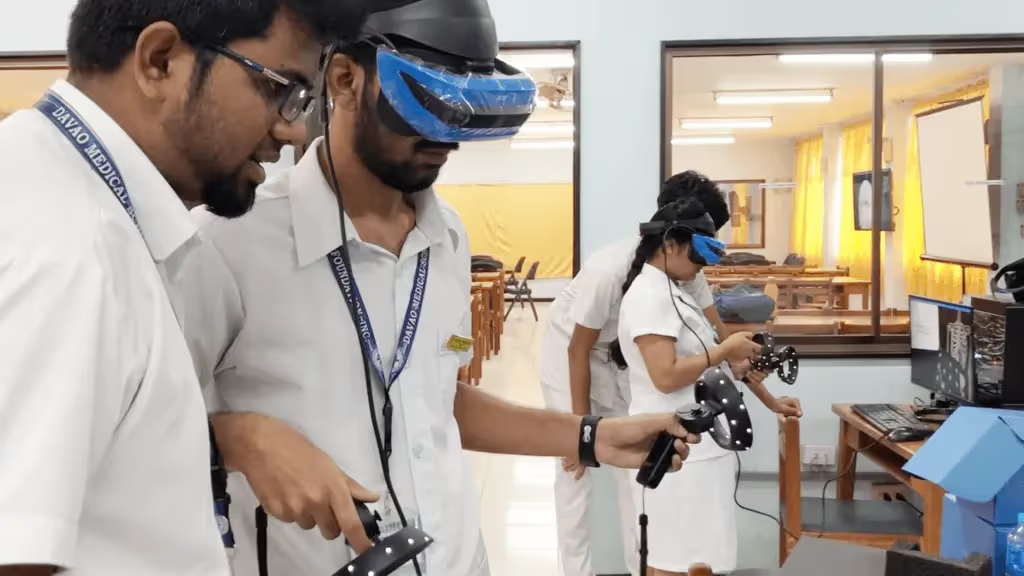[fs-toc-h2]Overview
It has been about 55 years since the first VR head-mounted display, The Sword of Damocles, was created in 1968, and over 7 years since Meta released its first VR headset in 2016. With Apple Vision Pro recently added to the family of VR devices, the VR economy has come a long way.
We feel now is a good time to take a step back, recap, and take a look at why exactly virtual reality (VR) is becoming more and more widely adopted, or more specifically, why VR is beneficial to students when they learn human anatomy.
[fs-toc-h2]First, what are spatial relations
A spatial relation or spatial relationship is the understanding of where different objects are and how these different objects relate to each other in a three-dimensional space.
Let’s say you are to dine at a new restaurant.
The moment you get off the subway or bus, you open Google Maps to check the names of the roads and turns at the intersections for a sense of where you will be heading, take notice of any landmarks along the way, try to imagine what the streets would look like in your head to establish a fully comprehensive 3D understanding of your environment.
Spatial relations give you a God’s perspective of where things are and how they relate to each other. In this case, knowing the location of the buildings in relation to their neighboring buildings—including what comes upfront, back, left, and right, etc.—enables you to better navigate and identify landmarks along the way, and easily reach your destination.
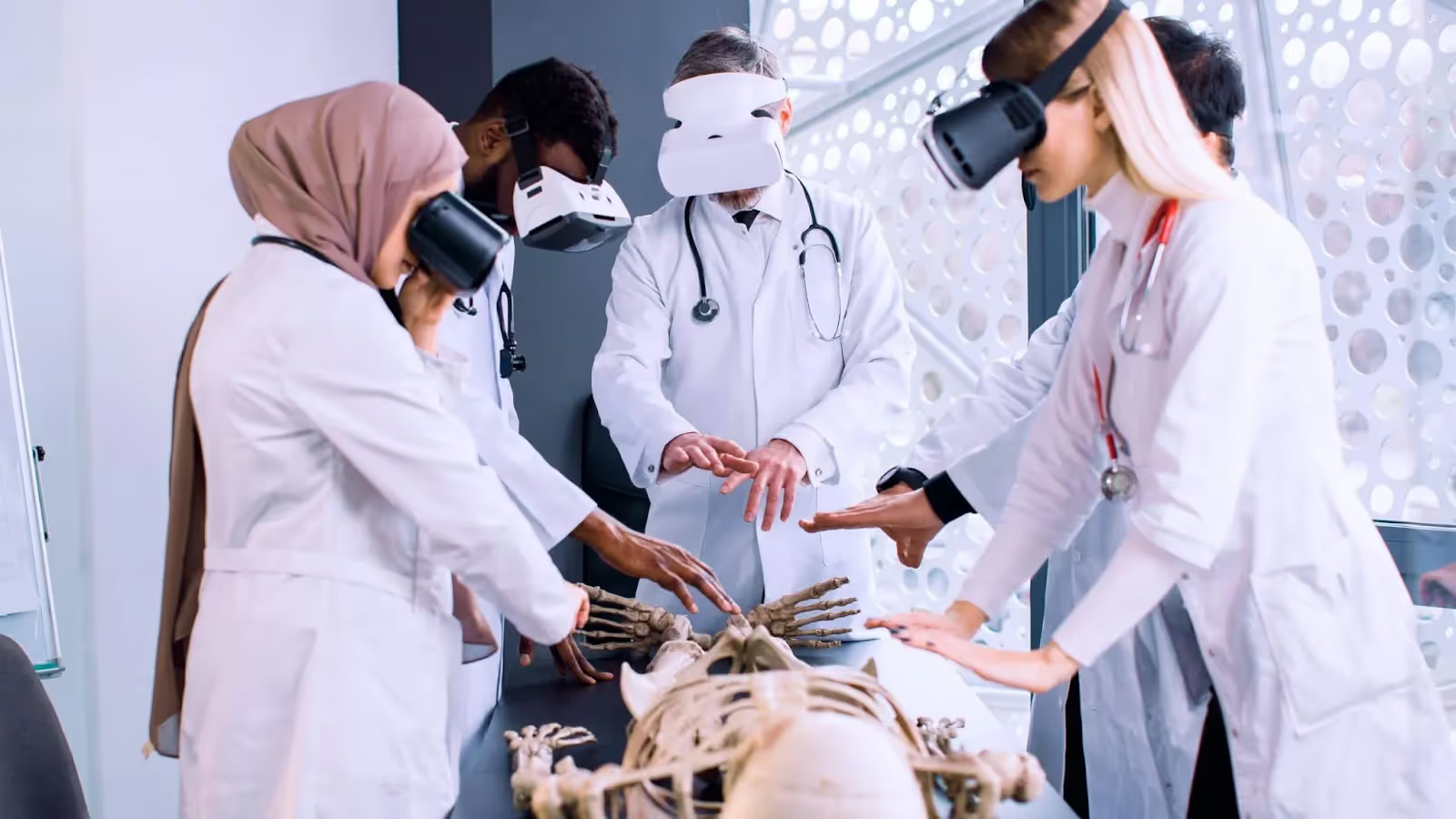
[fs-toc-h2]Why knowing spatial relations is important in human anatomy
It is similar to how you find your way in an unfamiliar place using Google Maps.
Understanding the spatial relations among different body structures is key to learning human anatomy because it allows you to fully grasp the locations and dimensions of structures, and how these structures relate to one another.
The human body is a complex mass of many different parts, including interlocking organs and their nerves, muscles, vessels, etc., working together to keep the body alive and healthy.
To enable students to easily identify an anatomical structure, or answer a complex scenario question that involves knowing the spatial relations between anatomical structures, a tool is needed, a Pubmed Research Study pointed out.
It is only when medical students know what spatial relations are, can they then easily fully understand the body structures and their relationships with each other, and truly master human anatomy.
[fs-toc-h2]Why use VR for learning spatial relations in human body
We already acknowledge that spatial relations tell students the location of body structures and how these structures relate to one another—something that is key to learning human anatomy.
Why VR for learning human anatomy then? With 3D and immersiveness as its strengths, VR can help students easily identify each structure through a visual, and engaging learning experience, and thus play a much bigger role in medical education than 2D, traditional learning.
[fs-toc-h2]VR helps you remember better
It has been proven numerous times VR helps people retain more information.
In a neuroscience study, the researchers identified that hippocampus, a brain region responsible for remembering, was more active when the participants engaged in a virtual environment than when they viewed static images.
The study from Saga University in Japan also pointed out that students’ brain activity increased 15.5 points from their resting state when learning in an immersive VR environment, as opposed to a mere 3.0 increase in a traditional classroom environment.
You might be surprised that it takes just 6 days for people to forget as much as 75% of new information read and that the retention rate for information learned in VR was as high as 75% versus 10% if the same information was learned traditionally, according to a study done by Lenovo.
[fs-toc-h2]VR enables you to see the whole picture
We have recently talked to Katie, a medical student from The University of Toledo, about her thoughts on using BodyMap for learning human anatomy.
“The continuity of how BodyMap can pull up different structures and trace them back when you start with something as simple as one is astounding,” shared Katie.
She pointed out that a big part of their curriculum is not only knowing the anatomical structures, but also how they relate to one another. This is what BodyMap has been helping her with.
Thanks to BodyMap, Katie was able to look at the supraorbital foramen on the skull without nerves showing or with nerves that would come through the fossa, and then further select a nerve to track it back to the trigeminal ganglia to study it.
In summary, virtual reality (VR) not only helps medical students identify body structures quicker, but it also gives a comprehensive, 3D understanding of where structures are and how they relate to each other as a whole in space—knowledge that is crucial to becoming a professional doctor or surgeon.
Begin your VR anatomy journey today, sign up for a 7-day free trial.
Future of MedTech
Learn how to navigate the 3D model and utilize the tools to master human anatomy—all in one place.

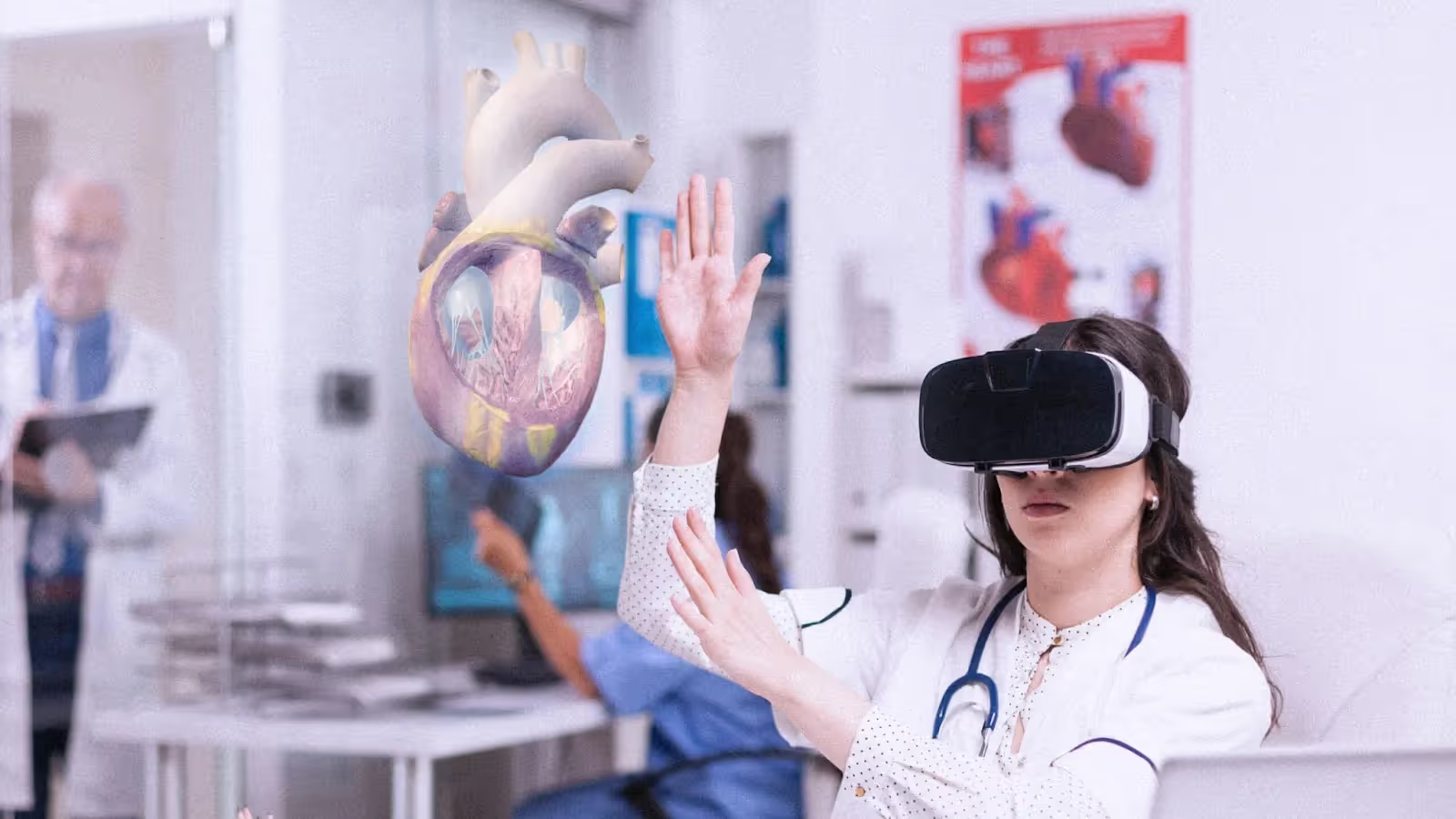

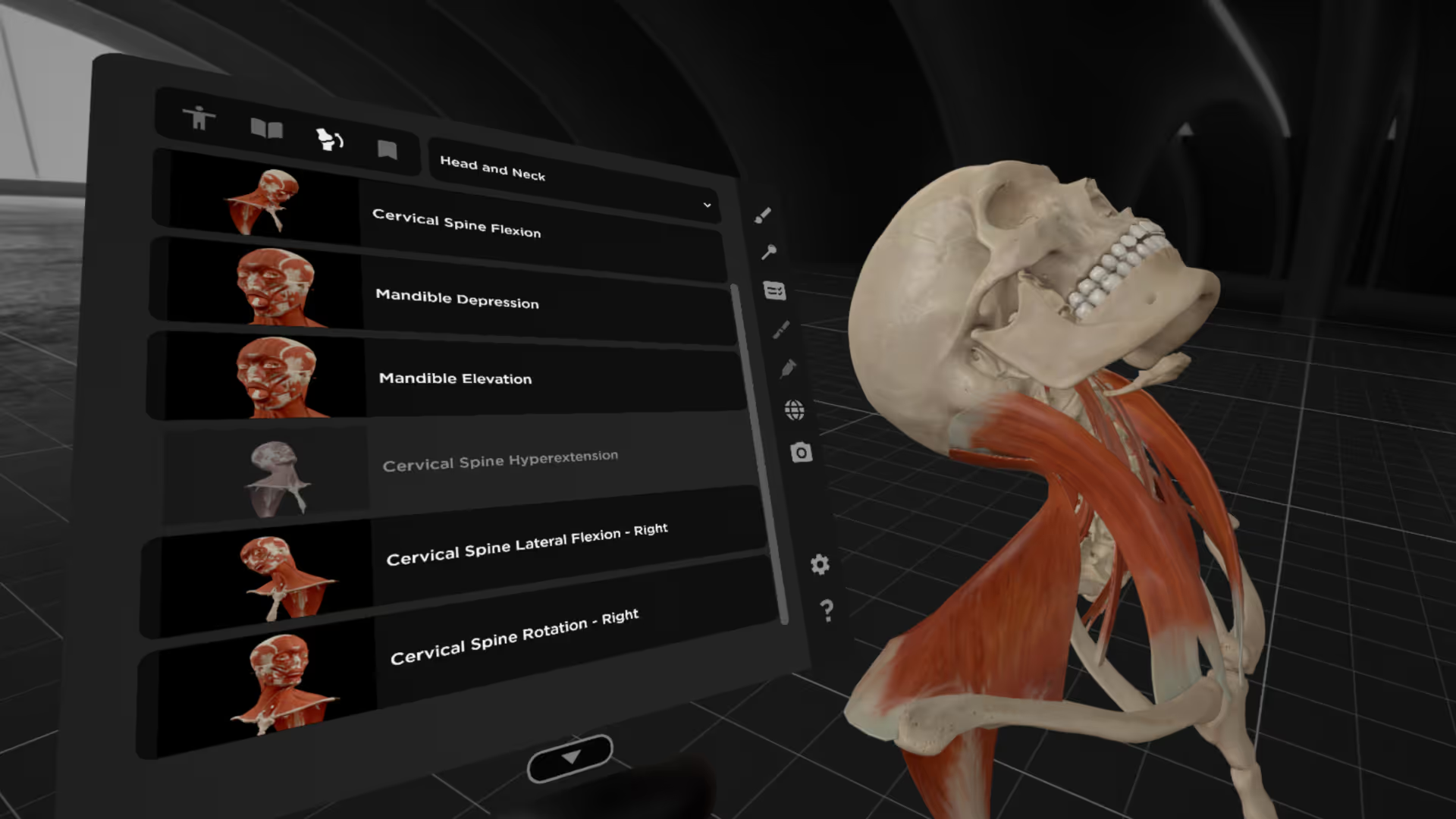

.avif)
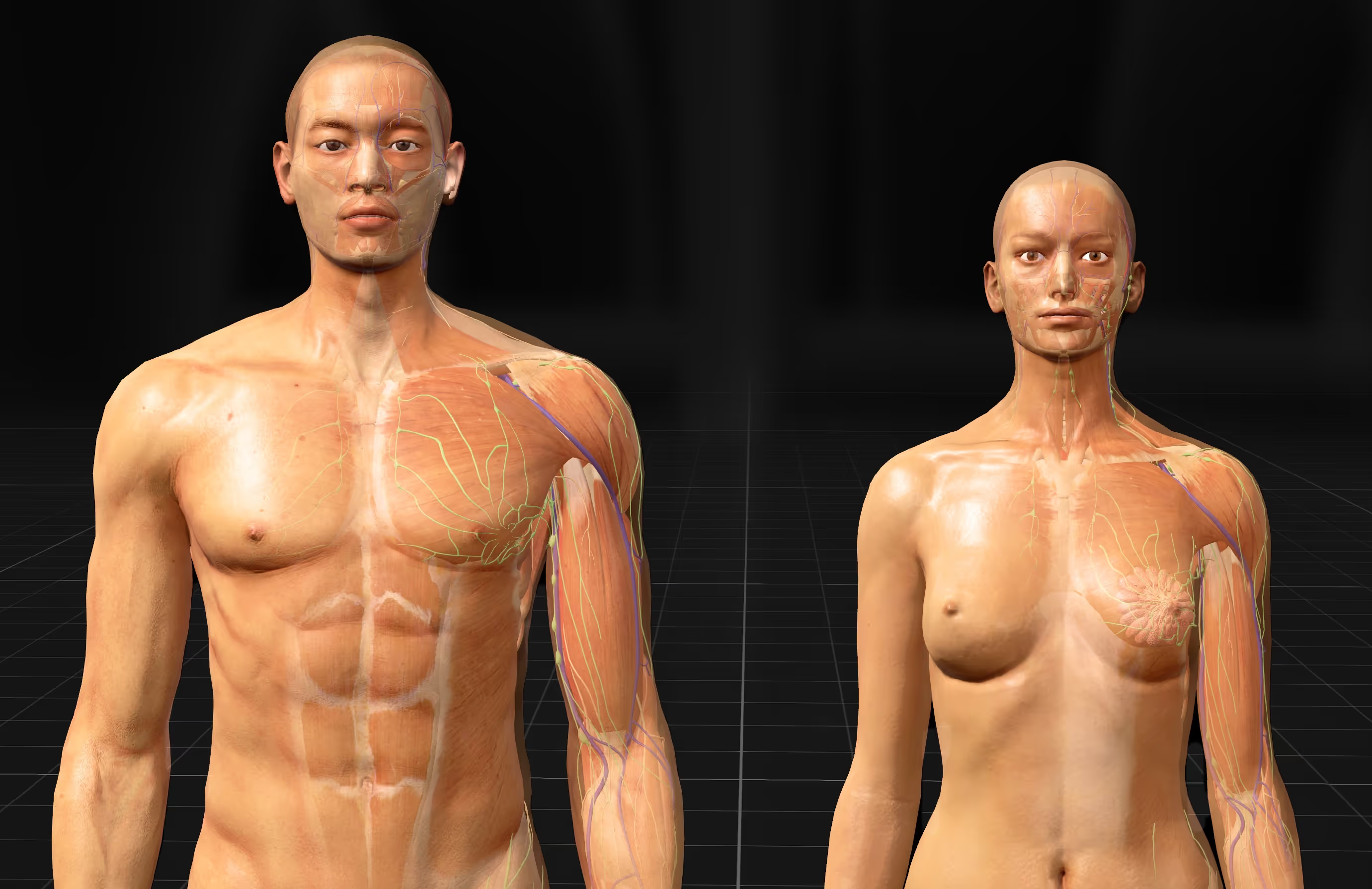

.avif)
.avif)



